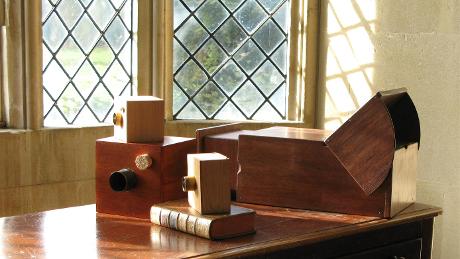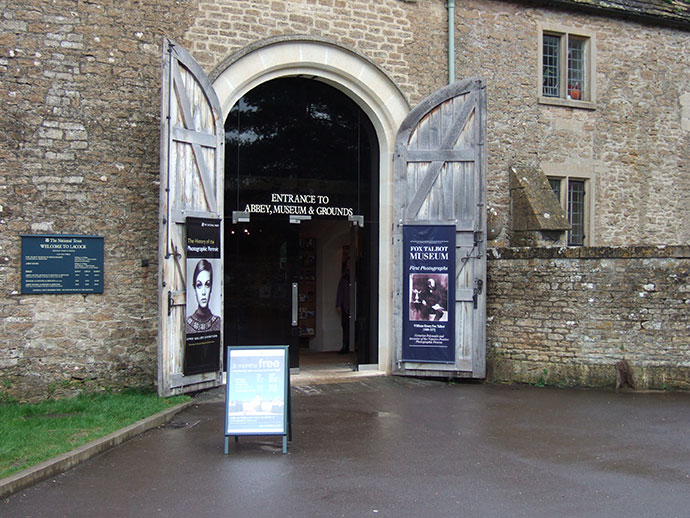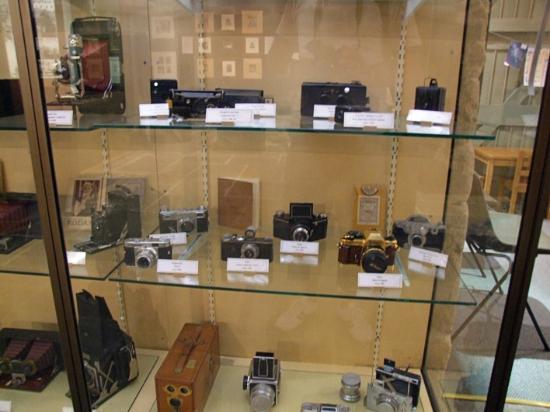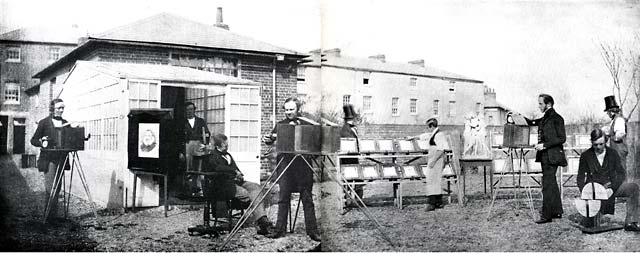It is impossible to conceive of a world without photographs – a world without illustrations in magazine and newspapers, or a family portrait on a wall. But the development of photography in England can be traced back directly to William Henry Fox Talbot who, as Richard Ovenden told us in his magisterial talk on January 9th, was an extraordinary Victorian pioneer and polymath.

During a visit to Lake Como, in Italy, in 1833, Fox Talbot was unhappy with his lack of success at sketching the scenery. It prompted him to dream up a new machine with light-sensitive paper that would automatically make the sketches for him. On his return to England, he began work on this project at his home, Lacock Abbey, in Wiltshire.
Using fascinating illustrations, Richard - executive head of the Bodleian Libraries, in Oxford - showed how Fox Talbot later invented the calotype process, which was a precursor to the photographic processes of the 19th and 20th centuries. He developed photography as an artistic medium, often exploring light and shade and Richard showed us some of Fox Talbot’s fascinating images of Oxford in the mid-19th Century and also – particularly striking - a view of the River Thames in London before the Houses of Parliament were built. He also recorded remarkable images in Paris and Reading.

Fox Talbot’s work in the 1840s on photo-mechanical reproduction led to the creation of the photoglyphic engraving process – the precursor of photogravure. His contribution is now considered so important that the Bodleian Library embarked on a campaign in December, 2012 to secure the archive and prevent it being broken up.
At Cambridge, Richard told us, Fox Talbot had read classics but later on – between 1822 and 1872 – he contributed many papers to the Royal Society, often on mathematical subjects. But he also studied physics and astronomy, as well as the archaeology and history of Mesopotamia for 20 years, and was among the first to decipher the cuneiform inscriptions of Nineveh. He even served as MP for Chippenham, in Wiltshire, for three years.

Early on, he had begun research on optical processes, which later dove-tailed into his work with photography, experimenting with chemicals to retain images of windows and light at Lacock Abbey. Indeed, an image of a lattice-window at Lacock, taken in August 1835, may have been taken from the oldest negative in existence.
However, Fox Talbot was not alone in his pioneering work. In France, Louis Daguerre exhibited some pictures in January, 1839 – his “Daguerreotypes”, pictures on silver plates - to the French Academy of Sciences. Three weeks later, Fox Talbot reported his “art of photogenic drawing” to the Royal Society. His process based the prints on paper that had been made light-sensitive, rather than bitumen or copper-paper.
Fox Talbot, added Richard, went on to develop the three primary elements of photography - developing, fixing, and printing. Although simply exposing photographic paper to the light produced an image, it required extremely long exposure times. By accident, he discovered that there was an image after a very short exposure and, although he could not see it, he found that he could chemically develop it into a useful negative.
The image on this negative was then fixed with a chemical solution. This removed the light-sensitive silver and enabled the picture to be viewed in bright light. With the negative image, Fox Talbot realised he could repeat the process of printing from the negative and, consequently, his process could make any number of positive prints, unlike the Daguerreotypes. He called this the “calotype” (later, the “talbotype”) and patented the process in 1841 – although his reluctance to share his knowledge with others lost him some friends.
In 1842, in recognition of his photographic discoveries, he received the Rumford Medal of the Royal Society. Fox Talbot also licensed Henry Collen, the miniature painter, as the first professional calotypist. Fox Talbot's negative-positive process eventually succeeded as the basis for almost all 19th and 20th century photography.

In 1843–44, he set up an establishment in Baker Street, Reading, for the purpose of mass-producing salted paper prints from his calotype negatives. The Reading Establishment (as it was known) also produced prints from other calotypist's negatives and even produced portraits and copy prints at the studio. Talbot’s The Pencil of Nature (1844-46), published in six installments, was the first book with photographic illustrations. Its 24 plates document the beginnings of photography primarily through studies of art objects and architecture.
Just before last August's deadline, Richard told us, the Bodleian reached the £2.2 million needed to secure the archive after liasing with a dealer in New York, who was acting for the family. A large grant of £1.2 million from the National Heritage Memorial Fund gave the appeal a vital boost and there was also a gift of £200,000 from the Art Fund. Last spring, sixteen images by leading contemporary photographers were also donated for sale at Sotheby’s to support the campaign.
Richard suggested that it would take several years to order the Fox Talbot archive - but it would forever provide a rich research recource in Oxford.. About 140 people attended Richard’s talk on a night with ferocious winds – and the heating system came into its own.
“Richard’s brilliantly lucid and informative talk provided a wonderful insight into the work of William Fox Talbot, who is perhaps not quite given the credit he deserves for transforming the way we see the world. To view early photographic images of well-known places in the 1840s – rather than paintings – was, indeed, remarkable. A fascinating start to what will probably be another peerless year of talks in Wootton – Adam Porter, London
|